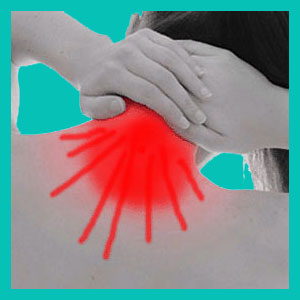
A herniated disc spasm may occur in the back, neck or virtually any area of the body served by an affected spinal nerve, but is always a horrible suffering to endure. Back spasms are one of the most painful experiences a person could ever have in their lifetime and can create tremendous emotional consequences besides their obvious physical symptoms.
This explorative treatise will discuss possible links between a range of muscular spasm conditions and herniated intervertebral discs. We will also look into other potential explanations for muscle spasm events where a disc prolapse may be coincidental.
Herniated Disc Spasm Facts
Herniated discs can create muscular spasms if they are legitimately affecting a spinal nerve root which is responsible for controlling the affected muscle. This condition is commonly referred to as a pinched nerve when it affects the upper portion of the spine. Sciatica is the name used when the herniated disc affects the lower body region. Some of the worst lower body spasms are reported as leg cramps. Not all these condition entail muscular spasms, but may certainly do.
The actual process by which a herniated disc can compress a nerve root is typically called foraminal stenosis. This term describes a blockage of the neuroforamen, which are the spaces through which nerve roots exit the spine at each vertebral level.
Muscular spasms might also result if the herniated disc impinges on the actual spinal cord. This process is called spinal stenosis and might consist of a wide range of symptoms in the immediate area or in virtually any bodily region below the affected vertebral level.
Remember, all muscles are innervated by nerves and when the nerve signal is interrupted or altered through structural compression or chemical irritation, significant symptoms, such as recurrent spasms, may result.
Muscle Spasms from a Herniated Disc
Most herniated discs are simply not symptomatic. Of those that do cause pain, most will not cause muscular spasms. In fact, spasms are quite rare for herniated disc patients and are typically found far more often in patients with ischemic back pain conditions.
Generally, muscular spasm occurs at high levels of oxygen deprivation, which is typically found in patients with the most severe cases of chronic ischemia. This condition exists in most patients due to a psychosomatic process, rather than a structural anatomical causation.
However, this is far from an absolute. Many lumbar herniated disc sciatica sufferers do endure areas of spasm in the legs or feet, while some cervical pinched nerve patients have similar expressions in the arms or hands.
Herniated Disc Spasm Occurrence
If you are suffering from back spasms, it is crucial to try to stay relaxed. Do not stress or worry over the condition, since this will make the matter worse, regardless of the source of the spasms. Do not push yourself too hard, but do not remain motionless in bed either. Try to keep your body moving gently and do whatever you can to improve circulation in the affected area. The best methods of increasing local circulation are hot compresses, exercise and knowledge therapy techniques.
Muscle relaxants are helpful for some patients with severe and recurrent spasms, but this form of symptomatic pharmaceutical treatment can create just as many problems as it solves. Be careful when using muscle relaxants and never use them for longer than absolutely necessary.
Remember, there is no universal cure for muscular spasms, since these events are merely a symptom of a greater underlying condition. If you can positively identify the reason for the spasms, then at least you have an objective to target through appropriate herniated disc treatments.
Herniated Disc > Herniated Disc Symptoms > Herniated Disc Spasm





